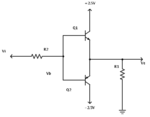uniluigi
Newbie level 4
Hi, I'm new here and I'm studying analog electronic from Sedra Smith ( 6th ed ). In this book exercises are without solution and I can't find them ( cos they are reserved for teachers only ).
I've read some threads in this forum but link doesn't work anymore maybe because they are old right now.
Does someone have any exercises? I need them about op-amp, bjt, fet, diodes and feedback.
Thank! :roll:
I've read some threads in this forum but link doesn't work anymore maybe because they are old right now.
Does someone have any exercises? I need them about op-amp, bjt, fet, diodes and feedback.
Thank! :roll:

